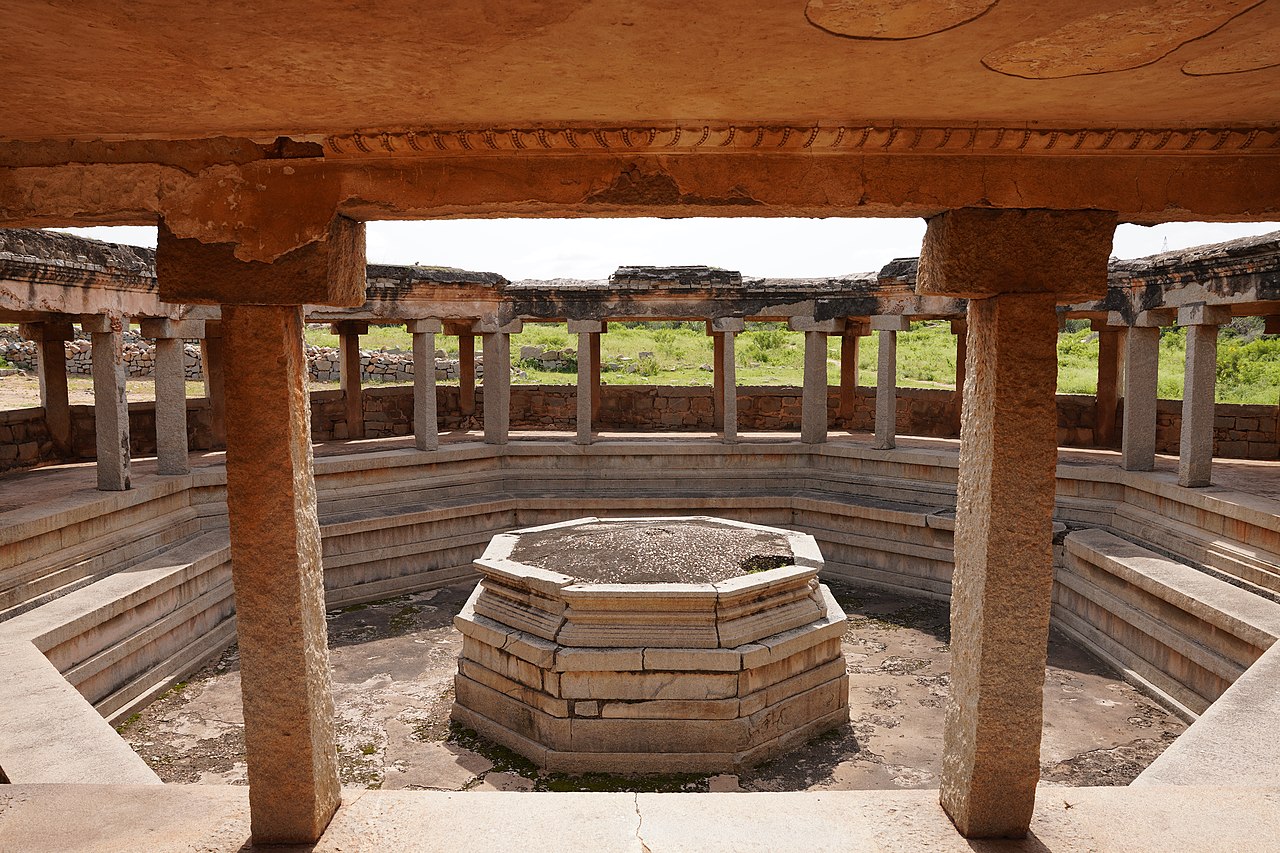Gurugram’s Hidden Gem
The Delightful Gol Baoli of Farrukhnagar
Not far from the bustling city of Gurugram lies this Baloi – a historical treasure that many have yet to discover. Nestled in the small town of Farrukhnagar, this hidden gem is surrounded by rich history, including the Sheesh Mahal, remnants of royal palaces, an ancient fort, and a Jama Masjid. But the true marvel is something you might easily overlook: the Gol Baoli, a stepwell that’s as unassuming from the outside as it is surprisingly calm and restful within.

Don’t Judge a Book by Its Cover!
If you’re driving along the Jhajjar-Gurgaon road, you might dismiss the Gol Baoli as just another old structure attached to an aging gateway. But step inside, and you’ll find yourself transported to another era. Built during the reign of Mughal Emperor Farrukh Siyar (1713–1719) by Ghaus Ali Shah, the local ruler of Farrukhnagar, this octagonal stepwell is a good example of Mughal architecture.
Interestingly it’s not unique to Mughal, rather a piece of Indian architecture – compare it with the octagonal bath at Hampi – both are essentially octagonal shaped baths with surrounding verandahs. Each done in their regional style prevalent at that time. One gets plenty of water, while another needs a well in the middle.


A Hidden World Beneath
From the outside, the baoli appears as a solid circular wall, but inside, it reveals a sunken octagonal courtyard with a deep well at its center. Surrounding the courtyard is a raised verandah with gracefully arched stone steps leading down to the water tank. The well itself plunges over 100 feet deep, a testament to the ingenuity of its creators.
The baoli’s upper level features chambers for relaxation, accessible via the verandah. Each side of the octagon boasts three elegant cusped arches, with vaulted ceilings and charming niches built into the walls and under the steps. This architectural marvel is said to have functioned as a royal spa, with its thick lime-plastered walls offering a cool retreat from the sweltering summer heat of the northern plains.
Echoes of History
Legend has it that women from the nearby Sheesh Mahal used this baoli for bathing, with its design resembling the luxurious Turkish hammams of the Mughal period. A tunnel once connected the baoli to the Sheesh Mahal, allowing seamless access for royalty, though it was sealed off in the early 19th century. Today, the road runs directly over the terrace of the baoli, blending history with modern infrastructure.

More Than Just a Baoli (Stepwell)
The Gol Baoli wasn’t just a luxurious retreat; it was also a strategic asset. Its elevated terrace likely served as a surveillance point, ensuring the security of this crucial water source during hostile times. Locals relied on the baoli for fresh water until the advent of municipal tap water, which sadly led to its disuse.
A Call to Preserve Baolis
Without regular use, many baolis across India have fallen into neglect, often becoming garbage dumps. The Gol Baoli stands as a stark reminder of the importance of preserving these historical landmarks. By visiting and spreading the word, we can help ensure that this architectural wonder remains a cherished part of our heritage.
So, next time you’re near Gurugram, take a detour to Farrukhnagar and step into history at the Gol Baoli. Combine it with a trip to Sultanpur national park. It’s a journey worth taking, one that connects you to the splendor of India’s past.
We recommend these links to see more pictures of the Baoli and Farrikhnagar:
Baoli Ghaus Ali Shah, Discover best Baoli in Gurgaon | We Are Gurgaon









